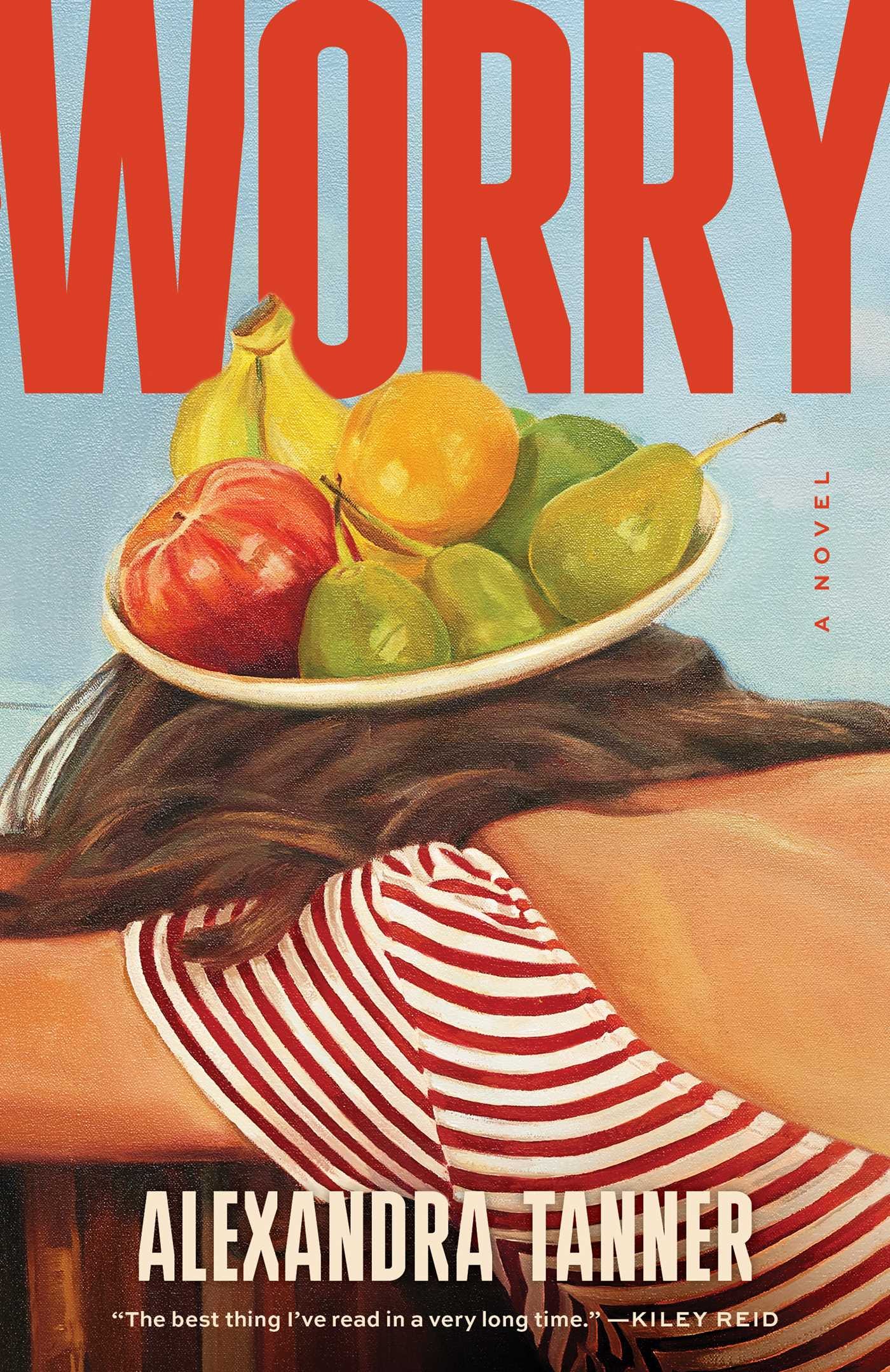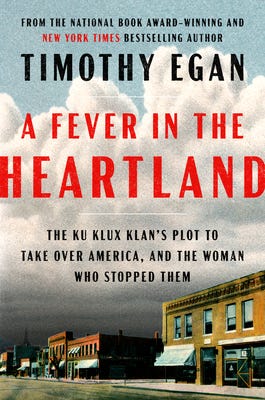what I read last week
the unmaking of june farrow, the song of achilles, outline, lincoln in the bardo, headshot, worry, a fever in the heartland
So, I read too many books last week — My husband was out of town, so I had some extra time in the evenings and on dog walks to read and listen to audiobooks. I’ve divided this into sections: fun fiction (I struggled to put these down), literary fiction, and nonfiction. (The cover photo is a reference to Headshot, which takes place in Reno.)
FUN FICTION:
The Unmaking of June Farrow by Adrienne Young
The Unmaking of June Farrow is a historical time-travel romance set in a small town in North Carolina (near Asheville). The novel opens in the present day. June Farrow is in her mid-30s and struggling after her grandmother dies. We learn that a mysterious curse plagues the Farrow women and that June’s mother, Susanna, mysteriously disappeared, leaving her to be raised by her grandmother. Without including too many spoilers, June travels back to the 1950s.
BookTok influenced me to read this book — One influencer said it was “possibly my favorite book of all time.” I definitely wouldn’t go that far in my praise, but this was a fun and quick read. And I can’t resist a time travel love story.
My Rating: 3.5/5
Genres: Historical Fiction (Love Story)
Movie/TV Pairings: Outlander; About Time; The Time Traveler’s Wife
The Song of Achilles by Madeline Miller
I am happy to write that I did not break my Greek retelling reading streak (see my past reviews for Circe, The Silence of the Girls, and The Women of Troy). In The Song of Achilles, Miller explores the love affair between Achilles and Patroclus. Despite the title, Patroclus narrates this book. After killing another boy, Patroclus (born a prince) is exiled and adopted by Peleus, the king of Phthia (and father of Achilles). Patroclus grew up with Achilles and later followed him to Troy. While Homer does not explicitly say there was a sexual relationship between him and Achilles, many scholars think one is implied. Miller expands on this and tells a love story between the two Greek heroes.
Like Circe, I could not put this down — I read it in two sittings. But I did have a few issues with it. While the love story drew me in, their relationship sometimes reads a bit like a CW show. The other problem was pacing. We spend a lot of time with young Patroclus and Achilles, and then we are thrust into the Trojan War (and we sort of rush through the war’s main events). In fairness, I am comparing this to Barker’s The Silence of the Girls (which tells Briseis’s perspective on the Trojan War and is less romantic). But these critiques are minor. If you haven’t read this yet, you should.
My Rating: 4.3/5
Genres: Fiction - Myth Retelling
Audio: Another great British narrator (11 hr 15 min).
Movie/TV Pairings: The Brad Pitt Troy movie (not at all accurate to The Iliad, but I did rewatch it this past week). Also, the director of Red, White & Royal is adapting The Song of Achilles into a limited series!
LITERARY FICTION:
Outline by Rachel Cusk
Outline follows Faye, a divorced novelist, who travels from London to Athens to teach a writing workshop. Outline doesn’t have a conventional plot — Fay just talks to people and listens as they tell the outline of their life stories. She does do things (she eats dinner with people and goes for boat rides), but Faye is mainly the interlocutor.
Outline is the first book I’ve read by Rachel Cusk. I recently bought her newest book, Parade, but I thought I should start with one of her older works first. I got Outline from my library after reading this Guardian article (which says it is “a fitting entry point” to reading Rachel Cusk). I’m definitely hooked.
Outline has a pretty unique narrative structure (it’s basically all dialogue). I loved reading Cusk’s take on everyday but sharp dialogue. She plays with the idea that we are all outlines and form part of our identity through responses to the people we meet and the situations we encounter. We also get to know Faye as a person slowly through this dialogue even though we know very little about her. I definitely recommend this book for people that like this type of literary fiction!
My Rating: 4/5
Genres: Literary Fiction
Audio: Yes, this would work on audio (British narrator, 7 hr 17 min) — but you might want the print or Kindle version to highlight quotes.
Movie/TV Pairings: Lost Daughter
Lincoln in the Bardo by George Saunders
Lincoln in the Bardo takes place primarily in Georgetown’s Oak Hill Cemetery in 1862 following the death of Willie Lincoln, Abraham Lincoln’s 11-year-old son. The book is inspired by The Tibetan Book of the Dead — Tibetan Buddhists believe that when someone dies, they enter the bardo of the time of death, at which time they either ascend to nirvana or stay back until they are born again in a new body. The Tibetan Book of the Dead is intended to be read to these spirits as a kind of instructional manual.
Willie Lincoln is trapped in the bardo after dying of typhoid fever. President Lincoln grieves at his crypt in his own private bardo. The cemetery spirits (stuck by their remains, unable to go to the afterlife) are the primary narrators. The narrative passes from spirit to spirit (hence the 166 narrators interrupting themselves a thousand times). Saunders also includes quotes from various historical sources.
Okay, so when I read The Bee Sting a few weeks ago, it made me wish I was back in high school so I could write a paper on this instead of The Scarlet Letter. Lincoln in the Bardo made me feel the opposite. I get that this is a fascinating experimental type of literary fiction, but I slogged through it. I tried it in print. It read like a laundry list. I tried it on audio. The audiobook has an A-list cast of actors — but it has 166 (!!) narrators. Ultimately, I had to read a few reviews and interviews with George Saunders to get interested in this book.
Lincoln in the Bardo is a powerful book. Saunders explores the link between the President grieving his son’s death and the Civil War casualties: “Young Willie Lincoln was laid to rest on the day that the casualty lists from the Union victory at Fort Donelson were publicly posted,” Saunders quotes from the Journal of American History. More than a thousand troops on both sides were killed at Fort Donelson.
But all that said, I don’t think I would recommend this book to anyone that I liked. I somehow agree with both the 5-star Goodreads reviews and the 1-star reviews). I think that itt’s just too much of a slog to get through for too little of a reward.
My Rating: 3.5/5
Genres: Historical Fiction; Literary Fiction
Audio: See above notes (7 hr 25 min).
Headshot by Rita Bullwinkel
Headshot is set in Reno, Nevada, at Bob’s Boxing Palace (a sad, dilapidated gym). The book follows eight young women competing for a national 18-and-under boxing championship (the “12th Annual Daughters of America Cup”).
The book is split into sections, focusing on the opponents in each boxing match until a winner is declared. Bullwinkel’s kinetic prose drew me in. Even though we’re with the girls for just a few moments during each fight, we see their inner lives and desire for recognition. At times, Bullwinkel peaks into the future — “When Artemis is 60, she won’t be able to hold a cup of tea” after breaking her hand so many times as a teenager. Another boxer becomes a “typecast granny” actress.
Headshot has been on my TBR list mainly because of the cover art. (It’s also been longlisted for the Booker Prize, and Obama put it on his summer reading list). This week, I got the book off hold from my library and devoured it in one sitting (to be fair, it is only 224 pages). While I can see why some people don’t like this book (the plot is basically just vignettes of fights), I loved it.
My Rating: 4/5
Genres: Contemporary Fiction
Audio: This works on audio (5 hr 24 min).
Movie/TV Pairings: These are wrestling movies (and this book is about boxing), but — GLOW; Fighting with My Family (an underrated Florence Pugh movie from 2019)
Worry by Alexandra Tanner
Worry is a domestic novel about two sisters living together in Brooklyn in 2019. Our primary narrator is Jules, a 28-year-old aspiring writer working at a SparkNotes rip-off website. Jules’s younger sister, Poppy, comes to live with her for a year in her spare room. There’s very little plot or character development in Worry — it’s more about the dialogue (the two sisters bicker constantly) and how Tanner captures a version of 2019 Brooklyn millennial life. I loved her descriptions of doom scrolling and internet rabbit holes (Jules is obsessed with mommy bloggers).
I liked this book overall, but I found the two sisters to be annoying at many points. As one Goodreads reviewer put it: “kind of like if you wrote Girls today but instead of a friend group you gave hannah horvath a sister lol.” It’s not for everyone, but I’d read this if you want a book like that.
My Rating: 3.3/5
Genres: Contemporary Fiction - Messy Women
Audio: It might be a bit annoying on audio (a lot of the book is a dialogue between the two sisters) (7 hr 13 min).
Movie/TV Pairings: Girls; Frances Ha; Fleabag; Lady Bird
NONFICTION:
A Fever in the Heartland by Timothy Egan
I’ve checked this book out from the library a few times and kept returning it unread (probably because the topic is dark). Egan traces the Ku Klux Klan’s expansion in the American Midwest in the 1920s (Egan focuses mainly on Indiana).
I didn’t read any reviews going into this book. Based on the description (“a historical thriller”) and the title (“. . . and the woman who stopped them”), I thought there was a covert operation involved (possibly like Black Klansman). I was wrong — It’s her deathbed testimony that takes down Klan grand wizard D.C. Stephenson (who was a key figure in the second rise of the KKK during the 1920s). Stephenson was sadistic and assaulted women — I understand that it was important to describe his crimes, but the brutal sexual assault descriptions in this book were a lot for me to read.
Aside from the assault descriptions, this book was very readable (Egan’s prose is almost like a fiction novel). I learned a lot about Prohibition and the Klan’s Prohibition enforcement role. Egan also included a brief aside on how people circumvented Prohibition — basically, doctors prescribed alcohol for medicinal purposes (this is how Charles Walgreen financed his Walgreens chain expansion).
My Rating: 3.8/5
Genres: Nonfiction (American History)
Articles I couldn’t stop thinking about: I reread this LRB article about the Internet age by Patricia Lockwood.
This GQ article (“How To Make Millions As a Professional Whistleblower”).
This Conde Nast article on techno in Kosovo reminded me a bit of this old podcast on the history of Berlin’s club culture from 99% Invisible (one of my favorite episodes).












